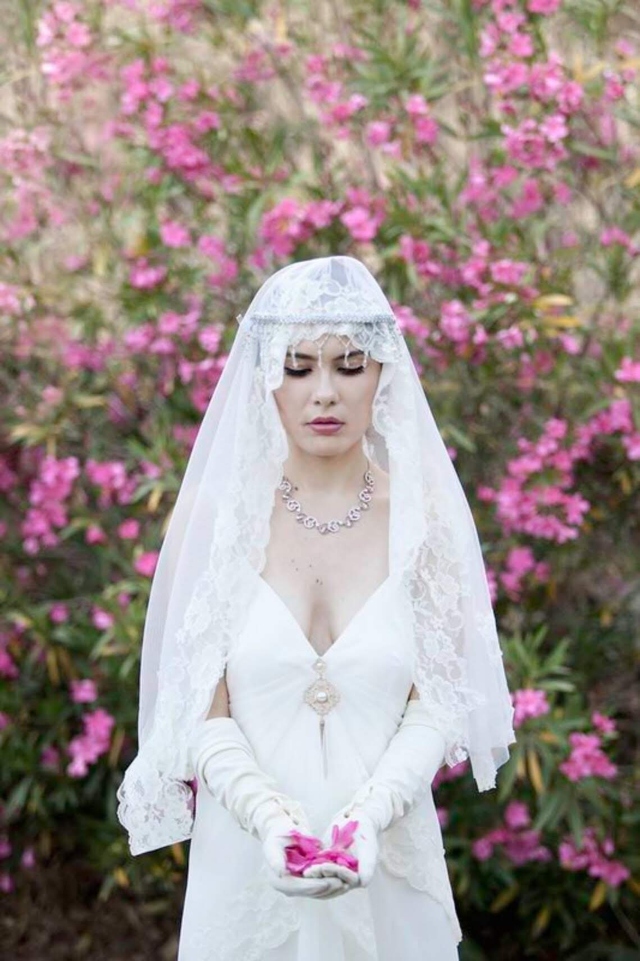TOPPING IT ALL OFF: YOUR VEIL
Most brides wait until the gown is ordered
before deciding on a veil. In addition to complimenting your dress, you’ll
need to zero in on your body type. For instance, petite brides want to create the impression
of height. Yes, petites can wear pouf veils as long as the volume up top doesn’t
imitate an Indian-headdress, dwarfing rather than extending height. Also
if you’re short, a cathedral-length veil isn’t the best choice—even a dropped
version with zero density. You can get the drama and extension you need
by scaling down to a waltz or chapel length to fit your proportion.
Heavier and/or thick-waisted brides look best in a one-layer dropped veil
tacked onto a bun, falling in a swirl down the back. Try keeping your
lines back and delicate, avoiding elbow-length veils with lots of volume.
Ditto veils edged in ribbon; they can form lines across the waist,
creating width. If you’re tall you’ll want to keep the poise of your
height intact without going over the edge. Go ahead and wear that
cathedral veil with your long-trained ballgown. But realize even tall,
sylph-like women have limitations. Princess Diana who was a stunning
5’10”, over-volumized her height her wedding day when she piled layers of tulle
atop a dress already screaming of über-pouf. Face it, we all have to work
on getting the symmetry right.
AFTER THE CEREMONY
If you’re in a long veil and want to
remove part of it for the reception, have your salon work out the fastening
system with you and whoever is helping you. Taking off the entire veil?
Exactly when during the reception is up to you; it depends on whether you
want to be veiled in photos cutting cake, toasting, dancing, etc. Some
brides wear their veil the entire day. And I suppose this is because
there is nothing quite like a white veil that says . . . Today is the
only day I will ever be a Bride.
Veils and gowns by Amy Jo Tatum
Photos 1&2 by Photo Chic
Veils and gowns by Amy Jo Tatum
Photos 1&2 by Photo Chic
Photo 3: Samantha Brancato Photography
graphy by Pixamage
Hair: Salon Kao Vey// Julie Morgan Hair and Makeup//Pins and Curls
Mua: Necia Whitmore
Hair: Salon Kao Vey// Julie Morgan Hair and Makeup//Pins and Curls
Mua: Necia Whitmore







